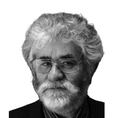The year 1905 was Albert Einstein’s “miracle year”. In that year, he published four papers in the renowned scientific journal Annalen der Physik.
The first, on the photoelectric effect, established the quantum nature of light, and led to the award of a Nobel Prize some 17 years later. The second, on Brownian motion, confirmed the atomic nature of matter. The third, on special relativity, revolutionised our view of space and time. The fourth, showing the equivalence of mass and energy encapsulated in the equation E = mc², led ultimately to the harnessing, for good and for evil, of atomic energy.
At that time, Einstein worked at the Patent Office in Bern, Switzerland. Two years earlier, he had married Mileva Marić, whom he had first met in 1896 when they were both admitted to the Polytechnic Institute (now ETH) in Zurich. Marić was born into a wealthy Serbian family in 1875. She completed her high school education in Zurich in 1894. From the moment they met, Einstein and Marić were inseparable, spending much time together studying mathematics and physics. Contemporary descriptions show them to have been a couple united by a shared passion for physics, for music and for each other.
The career of Marić, and the extent to which she contributed to the remarkable productivity and creativity of Einstein during the period up to his annus mirabilis, were described in a recent lecture at the Dublin Institute for Advanced Studies. Canadian physicist Dr Pauline Gagnon, who participated in the discovery of the Higgs boson at CERN in 2012, and who has been studying the career of Marić for many years, entitled her talk “The Tragic Destiny of Mileva Marić Einstein”.
I’d been insured for just one week when I crashed into a shiny black BMW
Easter activities: 10 family-friendly days out and events to enjoy over the holidays
Hyrox, the soaring fitness trend: ‘You meet so many different people, all shapes, all sizes’
The Last of Us review: Prepare to be shocked by this compelling new season
[ The importance of mathematical equations and why they are our friendsOpens in new window ]
Marić and Einstein had comparable grades throughout their studies. However, at the final oral exam, Hermann Minkowski awarded only five out of 12 points to Marić. Dr Gagnon suggested that she was deliberately blocked from obtaining a degree. Given the prevailing zeitgeist, this may well be true.
How much did Marić contribute to Einstein’s ground-breaking science? While nobody has been able to credit her with any specific part of his work, numerous contemporary testimonies make it clear they collaborated closely from the time they met in 1896, up to 1905 and beyond.
[ Einstein: brilliant physicist, humanitarian – and racist?Opens in new window ]
Concrete evidence of the role she may have had in his work is lacking. However, numerous letters they wrote to each other make it clear that they worked closely together. The letters provide a first-hand account of how they collaborated on special relativity: in 1901, Einstein wrote of how happy and proud he would be “when the two of us together will have brought our work on relative motion to a victorious conclusion”.
Einstein is regarded today by many as the most brilliant physicist of the 20th century. He is generally imagined as a singular genius, making his remarkable discoveries in solitary contemplation. But Dr Gagnon’s lecture made clear the important part played by Marić in Einstein’s research leading up to the theory of special relativity, and concluded she was “the first person to recognise his talent. Without her, he would never have succeeded.”
Peter Lynch is emeritus professor at the School of Mathematics & Statistics, University College Dublin. He blogs at thatsmaths.com
- Sign up for push alerts and have the best news, analysis and comment delivered directly to your phone
- Find The Irish Times on WhatsApp and stay up to date
- Our In The News podcast is now published daily – Find the latest episode here














